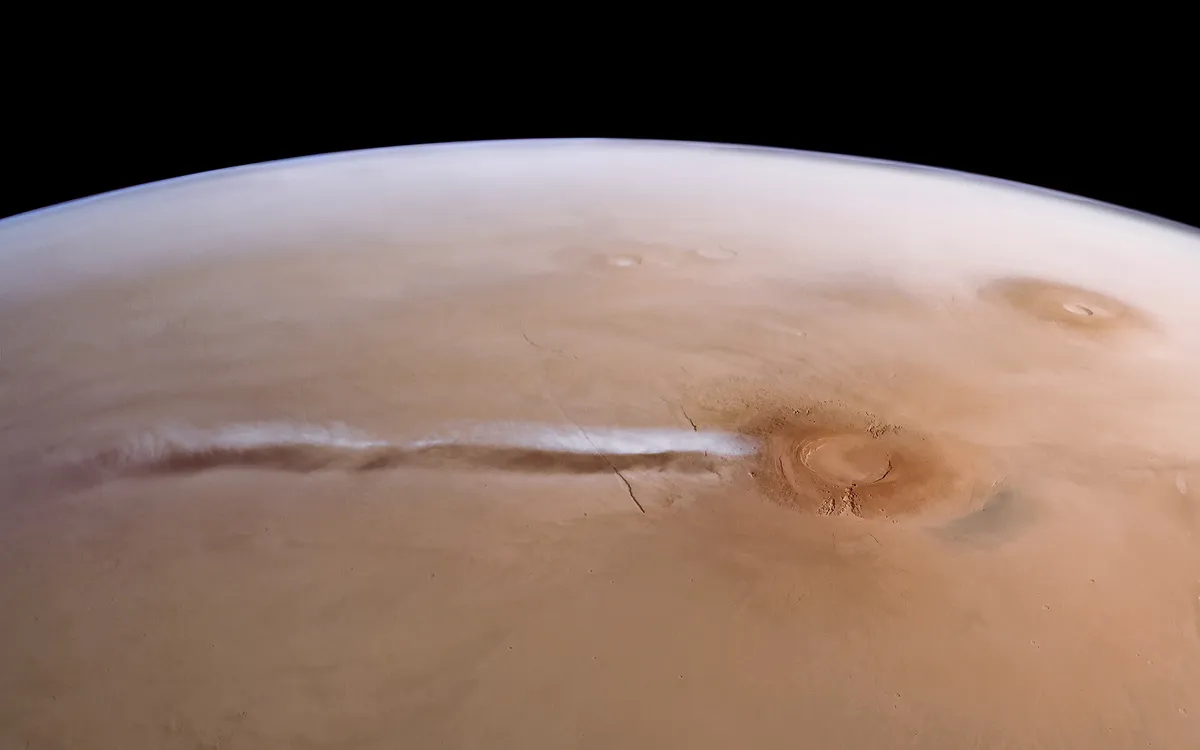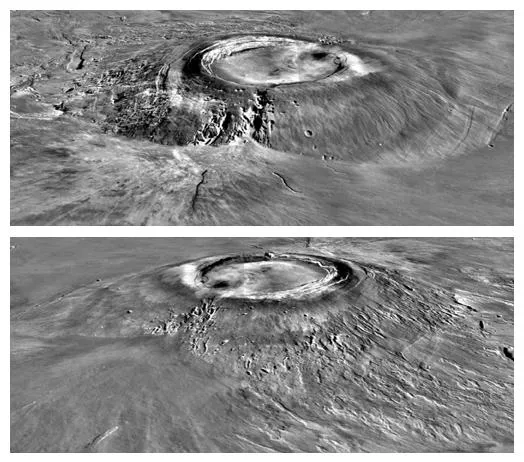Many planets in the Solar System have atmospheres, and their clouds bring much joy to the scientists studying them, including Mars.
One Martian cloud in particular has caught the attention of astronomer Jorge Hernández-Bernal and his team: a previously unnoticed, extremely long cloud that forms downwind of the Arsia Mons volcano.
This ‘Arsia Mons Elongated Cloud’ (AMEC) appears to develop every morning during the spring and summer seasons.
Read more from Lewis Dartnell, including a guide to the Asteroid Belt and a look at electronic propulsion of spacecraft.

Before dawn, a circular head of cloud, around 125km across, emerges over the western flank of the mountain, which then after sunrise extends rapidly westwards with the prevailing winds – moving at over 600km/h.
Eventually this thin tail of cloud reaches almost 1,800km, wrapped around the planet. By midday the air has warmed enough that the entire stretch of cloud evaporates and disappears.
Next morning, the cycle repeats again until the end of summer. The cloud stands out because the Arsia Mons volcano seems to be the only spot on Mars where water ice clouds form regularly in this season.

The team first spotted the curious cloud in 2018, and then – by checking back through archived imagery from a handful of different missions – realised it had been observed by orbiting spacecraft for years but no one had noticed it in the photographs.
What they think is happening is that relatively moist air is forced to ascend in updrafts driven by winds on Mars blowing along the mountain slopes, until water ice crystals form in the very low temperatures and then high-altitude winds blow them into a long streak.
The reason this extremely long cloud had gone previously unnoticed was a problem of timing.
Most orbiter probes sent to Mars have operated in a ‘Sun synchronous orbit’ – a polar orbit aligned such that the satellite passes over each point on the surface at the same time of day.

This is useful for imaging because the illumination angle on surface features is always the same.
For example, the Mars Global Surveyor, Mars Odyssey and Mars Reconnaissance Orbiter all had orbits aligned to pass over points with afternoon views – by which time the AMEC had already disappeared.
Mars Express was the only mission in a non-Sun-synchronous orbit, until 2014 with the arrival of Mars Atmosphere and Volatile Evolution (MAVEN) and then later the ExoMars Trace Gas Orbiter (TGO).
The AMEC has been there all along, but we were just passing overhead too late in the day and missed it.
This underscores the important point that sometimes in order to make a discovery it’s not just crucial to be looking at the right place, but also at the right time.
Prof Lewis Dartnell is an astrobiologist at the University of Westminster.Lewis was reading An Extremely Elongated Cloud over Arsia Mons Volcano on Mars by J Hernández-Bernal et al. Read it online at arxiv.org.
This article originally appeared in the June 2021 issue of BBC Sky at Night Magazine.
